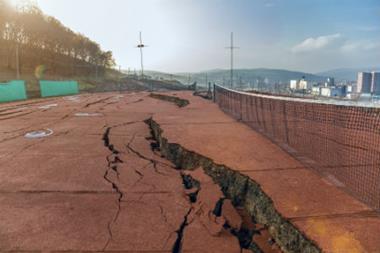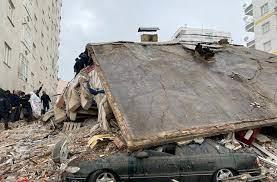Tragedy is a reminder that resilience is the main defense against such powerful seismic events
Around 17 million people would have experienced ground shaking at MMI VI-VII (strong to very strong) of the Modified Mercalli Index, which has resulted in Turkish President Recep Tayyip Erdoğan already describing it as the country’s largest disaster since the Erzincan earthquake in 1939, which killed nearly 33,000.
Around 3,000 collapsed buildings have been reported in Turkey and the earthquake was felt widely across Syria and Lebanon, through to Israel, Cyprus, Greece, and parts of neighboring Iraq, according to RMS.
“With the original earthquake striking at 4 am when everyone is asleep in their apartments, this will mean very high casualties – in the many thousands, even ten thousand plus,” commented RMS’s Robert Muir-Wood and Gordon Woo.
”After devastating tragedies such as this current earthquake, it reminds us that resilience is the main defense against such powerful seismic events.
“Implementing and enforcing strong building codes and either retrofitting existing buildings or ensuring new builds conform, is a route to lessen the impact of any future earthquake.”

Thousands of buildings collapse
It is too early to estimate economic and insurance losses from the event and relief agenceis have been working through the night to rescue those trapped in the rubble of collapsed buildings.
Turkey has a strong takeup of earthquake insurance, thanks to the country’s nat cat pool. The Turkish Catastrophe Insurance Pool (TCIP) was established following Marmara Earthquakes in 1999.
The largest city in the path of the fault rupture is Gaziantep in southeastern Turkey, just 40 kilometers (25 miles) from the northern Syria border, with a population of 2.1 million – the sixth-most populous city in the country.
Over 580 buildings have collapsed in Gaziantep Province, including large apartment blocks, and one hospital has partially collapsed.
As much as 38 percent of the total building stock in Gaziantep had no compliance with earthquake building codes. These figures may be representative of other smaller towns in the region, such as Kahramanmaraş and Malatya, which have suffered significant damage.
High levels of damage have extended to many other towns and cities including over the border into Kurdish Syria.
High probability of aftershocks
The East Anatolian Fault plate boundary comprises a network of faults, and the probability remains high in the hours and days after this major earthquake that another major earthquake could be triggered.
Already, within 12 hours of the original mainshock, a major Mw7.5 earthquake has broken another 100-kilometer (62 miles) long fault inland and to the north of the original shock.
There are also many aftershocks, spanning the full length of both fault ruptures. For such large earthquakes, it is misleading to focus on the location and depth of the epicenter which is simply where the rupture was initiated, often at one end of the fault rupture, say Muir-Wood and Woo.
The southwest end of the fault rupture is located around İskenderun, a Mediterranean coastal city some 115 kilometers (71 miles) west-southwest of Gaziantep and is close to the Roman city of Antioch (Antakya) – a city that has been destroyed by earthquakes several times in its history.
From a comprehensive historical review of historical earthquakes in the region, earthquakes of this size are rare.



















No comments yet